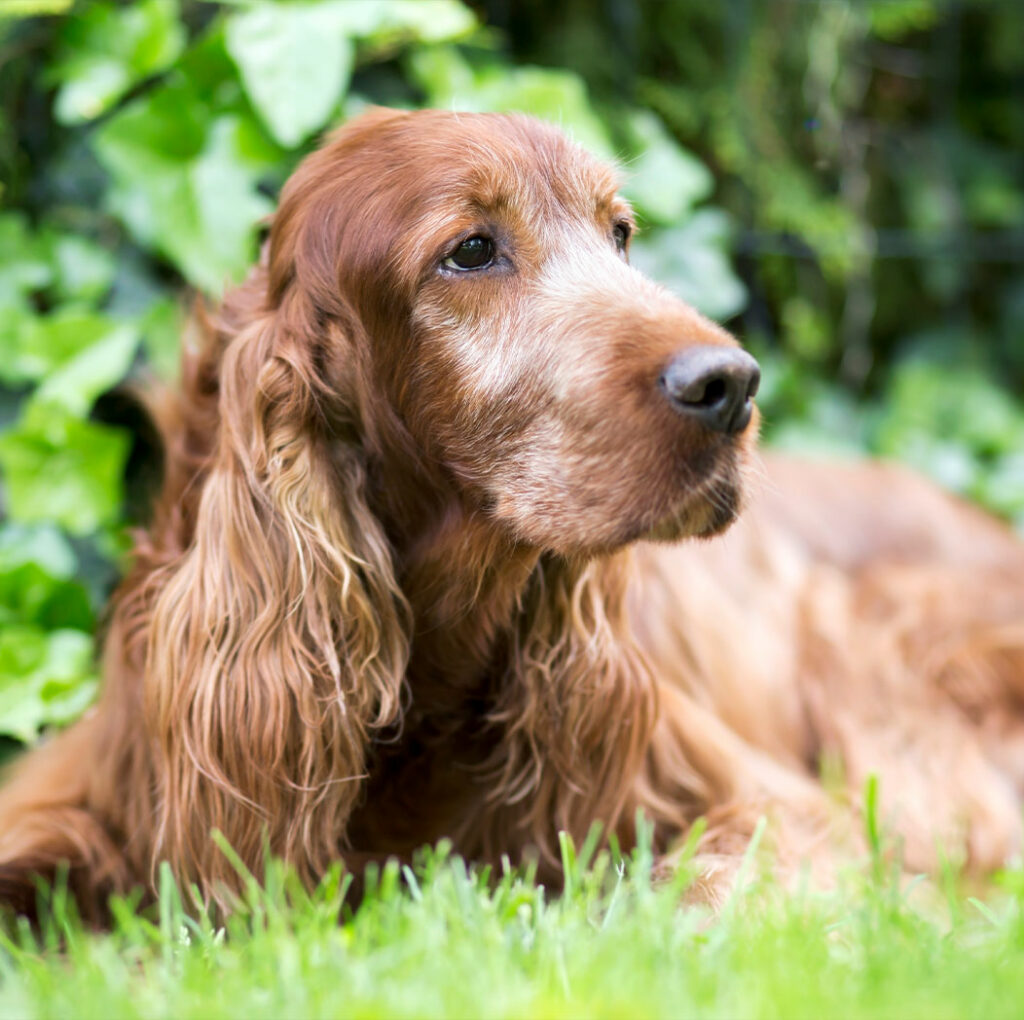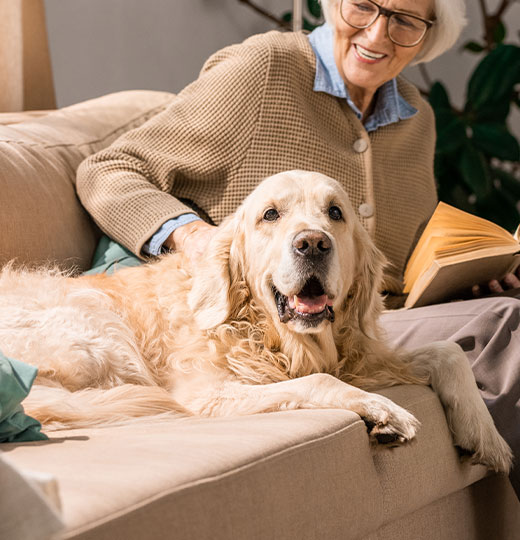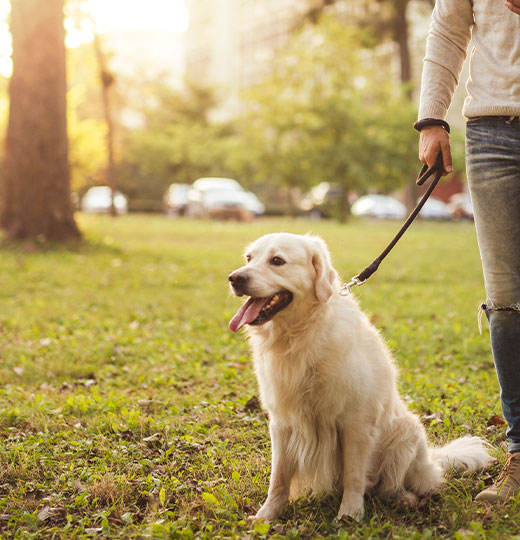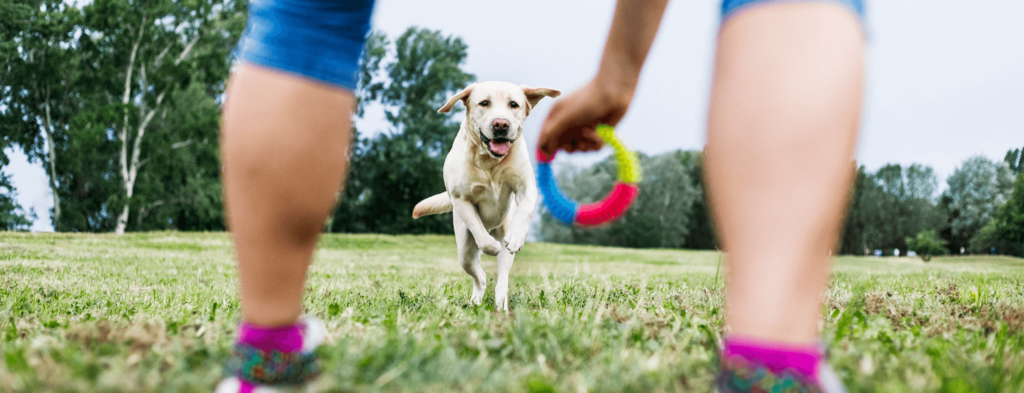TRUST THE TRAINERS
Great training
tips from
the pros
Before you get Started
SET YOURSELF UP FOR
TRAINING SUCCESS
Congratulations! You have decided to train your dog. Don’t worry; training can be
fun, a wonderful learning experience for you and your pet, and if done correctly,
may help strengthen the bond between you. So, where do you start?
Check their Health
Some behavior challenges can be caused by medical reasons, and besides, do you learn well when you feel poorly? Neither will your dog.
Keep it Positive.
Focusing on desired behaviors and rewarding them is a much kinder and more effective way to train than looking to punish your pup for misbehaving.
Have Patience.
Teaching commands (AKA cues) is about repetition and practice. Modifying behavior can also take time.
Get Support
Having a trainer to help answer questions and set up a good foundation is helpful. Plus, if you run into any difficulty, a professional can help get you back on track.
Training Tips By Dog Age
Select Your
DOgs Age
Common Puppy Behaviors
(0-1 yrs)
Obedience commands (AKA Cues), like sit and come, can be taught from the first day you bring your puppy home.
Sit: Put a Pet Botanics Training reward in your closed hand. Let the puppy smell your hand and slowly move your closed hand over the dog’s muzzle and top of their head. Keep your hand no more than a few inches from the dog. Most dogs will lean their heads back to follow your hand and move into the sit position as they do so. As the dog starts to sit, say sit, and once the dog is seated, give them their treat and praise them! That’s one repetition. Try to do 10-20 repetitions per day but since puppies’ attention spans are short, only string 2-3 repetitions together at any one time.
Come: Starting 5-10 feet from your dog, kneel while gently coaxing your puppy to you. Have a special training treat hidden in your hand. As the puppy comes toward you, wait until they reach you, say come and give them the treat. That’s one repetition. Try to do 20+ per day but not all at once. Make obedience training fun and always end on a positive note.
Help my puppy is chewing everything!
Puppies chew because they are teething, curious, bored, and like to!
The key is to train your puppy to chew on designated toys. Select toys that are durable, soft enough to chew but not so soft they can be torn into pieces, and speaking of pieces, avoid toys with parts that puppies can tear off and possibly ingest.
The more you can train your puppy to chew on their toys, the less they will chew everything else. Make their chew toy a focus of your play sessions and praise appropriate chewing. Try to pick up items you don’t want your dog to chew. While it is eventually reasonable and possible for your dog to learn not to chew on your socks and shoes, it’s best not to have them lying around for the first 3-4 months.
Also, make sure your pup is on a high-quality premium diet and gets plenty of exercise.
Most puppies will outgrow the chewing phase by the time they are 8-10 months old, although some take longer. If your dog is still chewing after a year, check out our adult tips for chewing.
Are you still having chewing challenges? Consider contacting a professional dog trainer.
Why do puppies nip on you? Just watch them playing with each other to see the answer. It’s normal behavior for them to bite each other playfully.
The challenge is puppies will instinctively interact with you like they do with other dogs. This means you must teach your puppy different, more appropriate ways of interacting with you.
First, avoid rough games and excitable greetings that encourage nippy behavior. Be calm when you greet your pup and be gentle. Encourage play teaches the puppy to chew on proper items or chase and fetch toys. Reward greetings that involve nuzzling or licking as opposed to nipping.
Focus on strengthening the behavior you desire by rewarding it. For example, when your dog licks or nuzzles, you praise and even reward with a Pet Botanics treat.
If your puppy playfully nips you, move your hands out of the way and, if necessary, walk out of the room for a minute before coming back. This will initially be confusing to your pup, and you might have to repeat this process a few times before the dog licks or nuzzles, but the instant she does, praise and reward!
Here are some tips for teaching your pup to go to the bathroom outside.
Feed at set times. This makes it easier to get the dog on a regular elimination schedule.
Take the dog to a safe spot outside and praise any elimination there.
Make sure you take the dog out regularly and note the dog’s elimination patterns.
Crate training is an effective way of house training but only if used correctly. For example, having a puppy in a crate at night could deter her from going to the bathroom. Then, you can praise her when she goes potty outside when you take her out to eliminate in the AM.
Don’t leave your puppy in their crate for more than 2-3 hours except at night. Never use the crate for punishment.
Treats can be a valuable tool to reward proper bathroom behavior.
Keep your eye on the dog when they are in the house so that when they look like they have to eliminate, you can quickly get them outside.
Contact a professional dog trainer if you have difficulty house training your puppy.
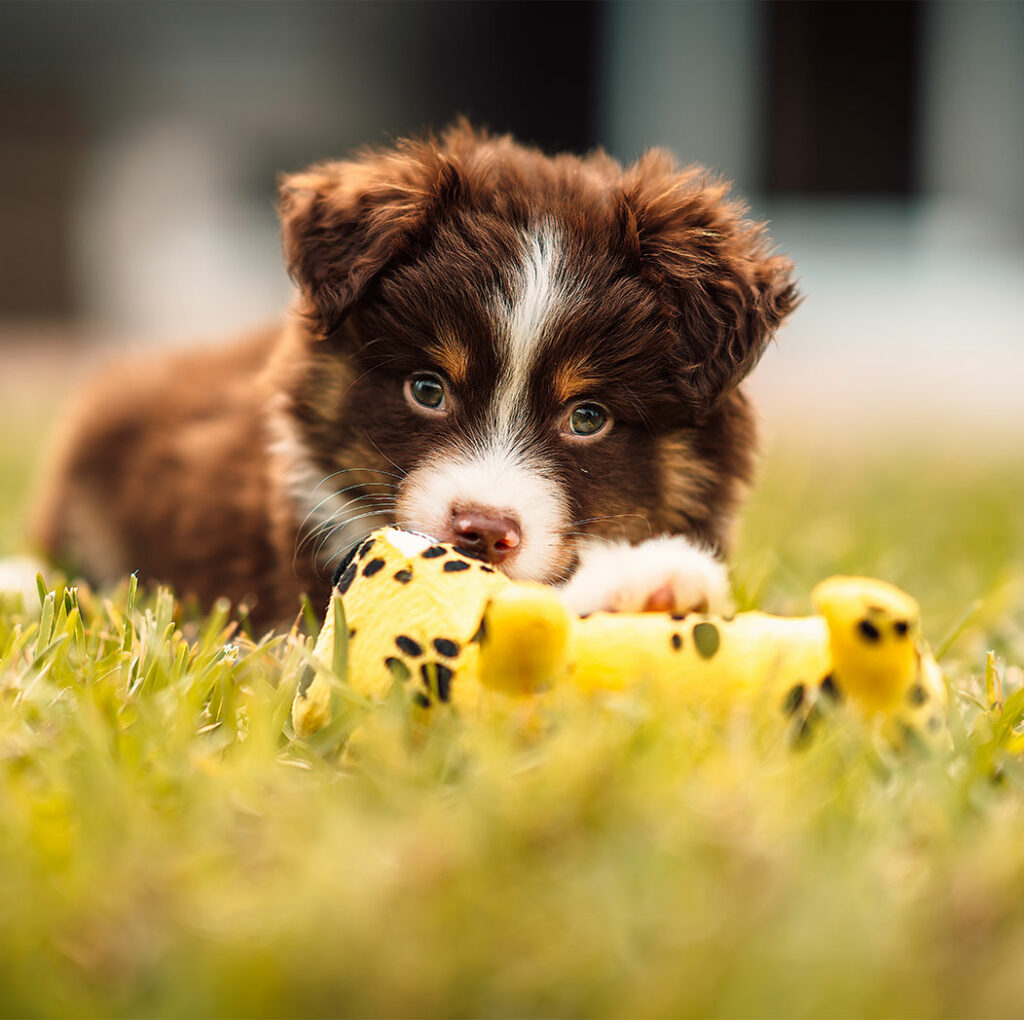
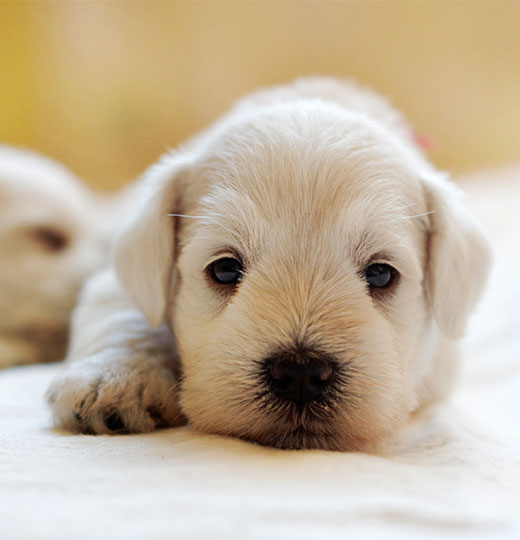
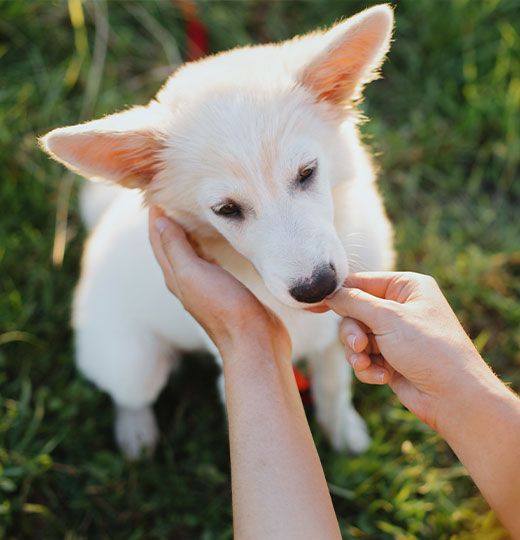
Common Adult Dog Behaviors
(1-6 yrs)
Training an adult dog? We have addressed three common behaviors that pet parents struggle with when they begin their training journey:
Dogs love to chew! This is fine until they start chewing your clothes and furniture. Some dogs outgrow this behavior, and some don’t.
Here are some tips to help with problem chewers.
Taking your dog for walks 4-5x per week can do wonders for your dog’s health and reduce some excess energy that leads to chewing. Check with your doctor and veterinarian before starting any exercise program.
Ensure that your dog has chew toys and interactive play toys to keep them occupied when you are home and when you are gone.
Some dogs chew because they don’t have enough social interaction. Remember, dogs are social beings and require contact with humans or other dogs to remain emotionally balanced.
Strongly fixate your dog on chewing their toys. Proper chew toys should be durable without small pieces that can injure the dog. You can also reward your dog for chewing on their toy with a special treat like Pet Botanics Training Rewards.
Dogs dig because they have excess energy, are bored, possibly stressed, or to keep cool.
Taking the dog for walks can cut down on the extra energy that sometimes stimulates digging. Walk your dog 4-5 times per week. Check with your doctor and veterinarian before starting any exercise program.
Don’t dig in front of your dog. Some dogs will copy your behavior.
Give your dog lots of play toys in areas where they typically dig. The more dogs have to keep themselves occupied, the less likely they may dig.
Remember that dogs are social creatures and need to interact with people or other dogs to remain emotionally balanced. More balance and reduced stress can equate to less digging.
Make sure your dog has access to cool, shady areas of the yard. This can stop dogs who dig holes to get cool during the hotter months of the year.
Some dogs have a strong instinct to dig. Consider setting aside an area in the yard for your dog to explore and encourage the digging there. You can bury treats, toys, etc. The more your dog digs in the designated area, the less they will dig elsewhere.
Teaching your dog not to jump on people can be easy as long as you have patience and are consistent in your training.
Avoid excitable greetings and rough play as both typically stimulate jumping.
Most dogs jump as a form of greeting. Teach your dog to sit as a substitute for jumping.
The more you reward your dog for sitting instead of jumping, the faster they will learn to sit as opposed to jumping on you. This is where food treats can motivate many dogs and why dog trainers have used treats like Pet Botanics for years.
Practice by entering the house and rewarding the dog for sitting instead of jumping. Try repeating this 5-10 times per day if possible.
Jumping is a behavior that can be addressed positively using obedience, a consistent reward for the appropriate behavior, and patience.
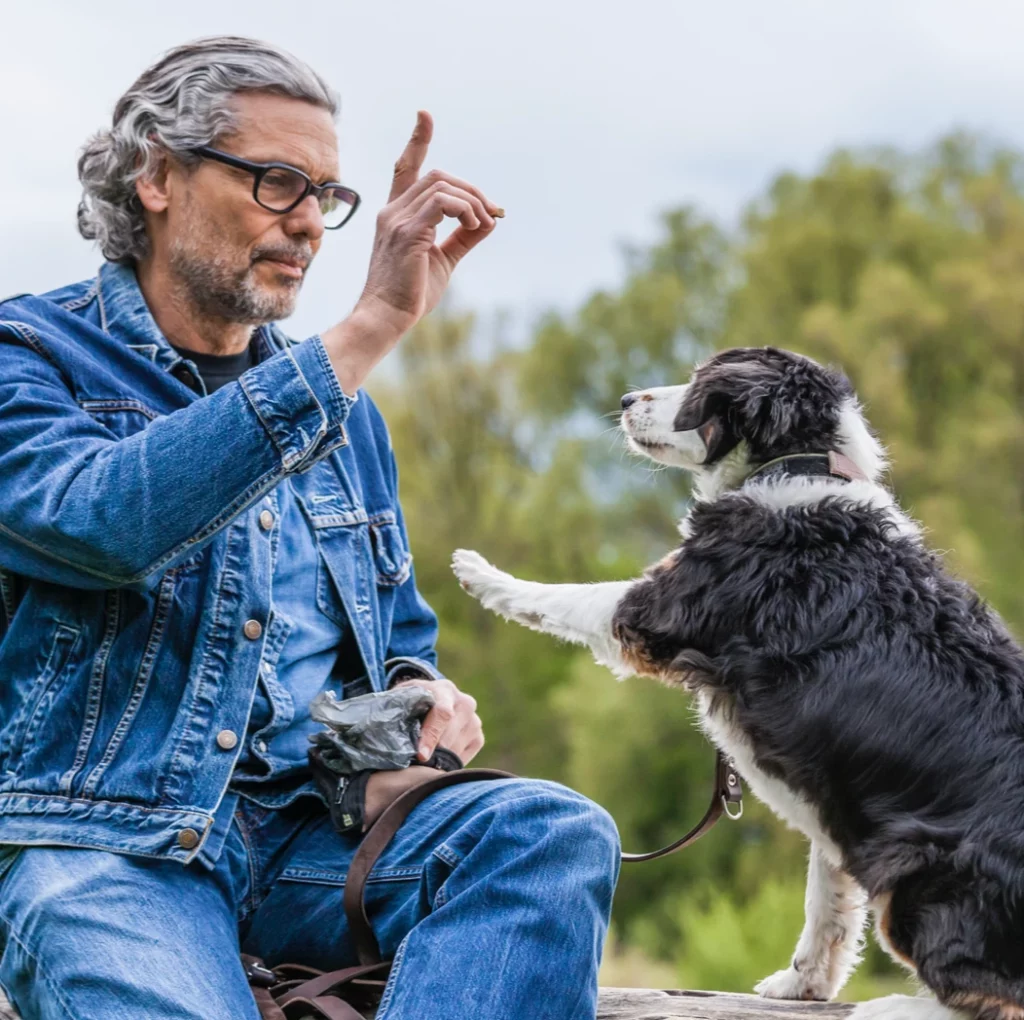
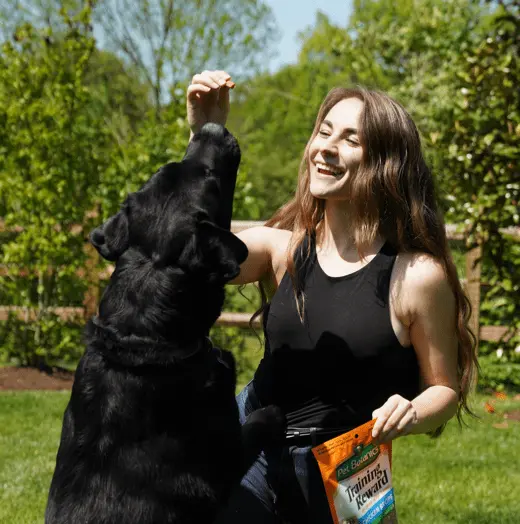
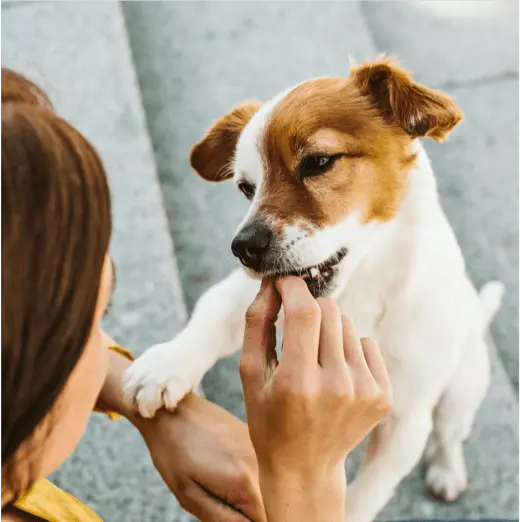
Common Senior Dog Behaviors
(6- yrs)
We’ve all heard that you can’t teach an old dog new tricks. Is that true?
Absolutely not. Older dogs can learn new things and sometimes be easier to train than puppies because they are not as easily distracted and have longer attention spans.
Generally, it’s not the dog’s age but the age of behavior that is most relevant. This means teaching a new behavior might be pretty simple as long as it is within the dog’s physical ability, but modifying an ingrained behavior that has gone unchecked for many years could be more challenging.
Often when the parents of older dogs consider training, it’s because a new behavior has manifested itself. This could include accidents in the house and excessive barking.
Before starting any behavior modification program with an older dog, have the veterinarian give them an examination to rule out any physiological reasons for the new behavior.
Sometimes older dogs need refresher training. Remember that rewarding desirable behavior is the best way to make it stronger.
Remember that it’s never too late to speak with a professional dog trainer.
As dogs get older, they can slow down and be less active. While slowing down is a normal part of aging, that doesn’t mean your dog doesn’t need to remain active and get adequate exercise. If anything, older dogs need more structured exercise because they are less inclined to move around as much independently. Here are a few tips;
We have mentioned exercise in many of the tips, and we will repeat it here. Before starting any exercise program, check with both your doctor and veterinarian.
Start slow and build up gradually. If you haven’t taken your dog for walks in a while, don’t start with a 5-mile uphill run! Instead, try a slow, steady walk for 15-20 minutes 3x per week and gradually increase the time and distance you walk together.
Be mindful of physical limitations.
The objective of exercise is to foster fitness and have fun. Most people can’t exercise at the same level at 65 as they could at 25. This is true for your dog as well.
I have walked with all of my older dogs until they were 15+ and I loved the time we spent and how emotionally and physically beneficial this activity was for both of us.
Accidents in the house. Rule out physical ailments with a trip to your veterinarian. This is vital as excessive defecation or urination in the house from previously housetrained dogs can be signs of serious illness. Start taking the dog out to eliminate and reward the proper behavior.
Do this for a couple of weeks to a month. Assuming illness has been ruled out, and the dog isn’t taking medication that increases their desire for water, sometimes accidents can be controlled by limiting water intake at night. This doesn’t mean zero water; it simply means not an unlimited supply.
Some dogs with diminished bladder control can be taught to eliminate on a pad in the house.
Excessive barking can be caused by confusion or stress. Determine if your dog is in pain as this can cause barking. Slightly limit the amount of space the dog has to wander in. Less space means less work watching over it and less stress. Consider a calming body wrap for older dogs that seem anxious.
Establish a consistent routine of walks and feeding, which can be calming for some dogs. Also, please make sure you touch and remind dogs with diminished sight or hearing that you are with them.
